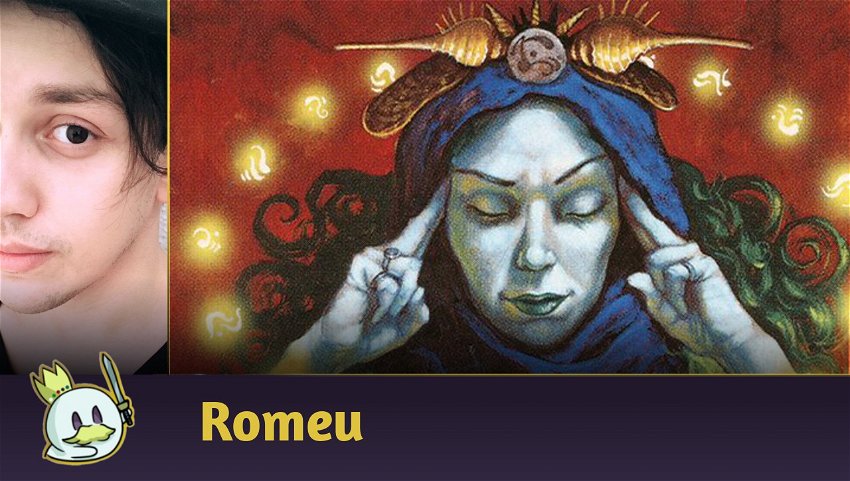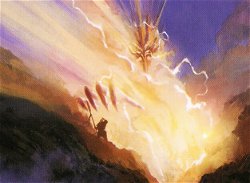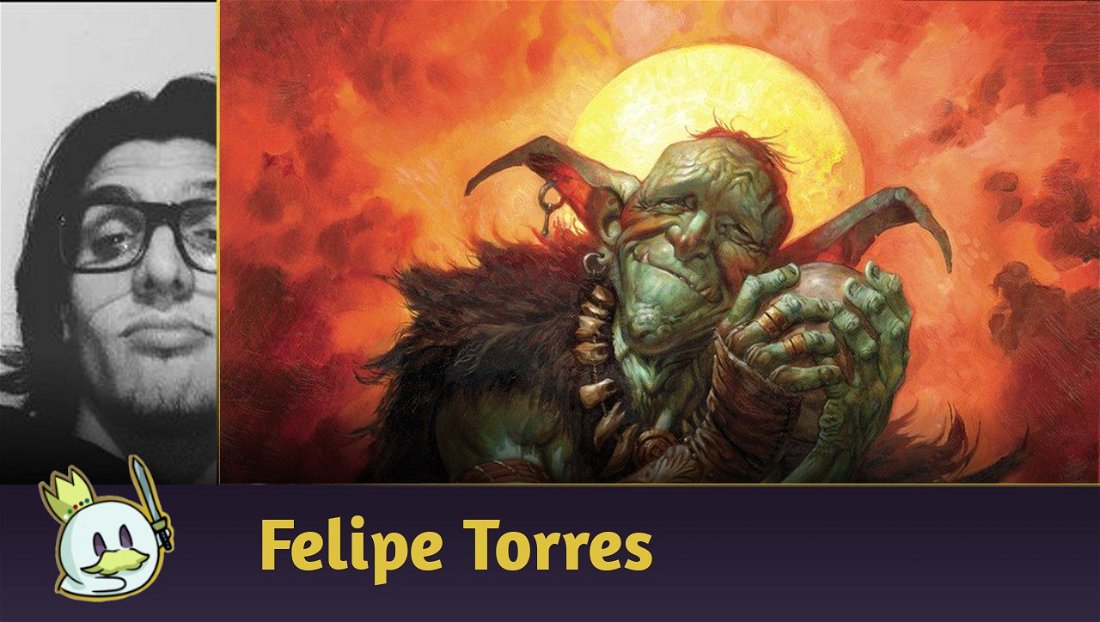Among the countless activities and ways to express your creativity that Magic: The Gathering offers, I think deckbuilding is my favorite. It often involves an understanding of mechanics, synergies and strategies, as well as good knowledge of the format in which you are proposing to build a deck, while also allowing your own artistic or competitive expression on top of some individual choices regarding themes or on cards that you believe are well positioned for a specific tournament or event.
However, building decks is not a particularly easy or intuitive task without some prior knowledge of what you want or what archetypes you expect to face. Even at a casual table like Commander, some exercise in understanding the available cards is necessary in your collection, so your deck can run smoothly and naturally.
It is very common, when building a list instead of taking one directly from a tournament, to make some primary but very dangerous mistakes, which can cost a significant amount of time, money, or even the Top 8 of a tournament for nothing. Today, I would like to take the opportunity to point out five common deckbuilding mistakes that many players make, even if unconsciously.
1 — Playing with more cards than necessary
It sounds like an elementary lesson, but a Magic deck usually has exactly 60 cards (except for Commander, where the list needs to be 99 cards, and the Yorion, Sky Nomad decks, which we'll talk about later), with some variations occasionally using 61, though it's not recommended at all.
Since it's a common sense, I won't go into too much detail on this topic: the more cards we have in our maindeck, the less likely we are to be able to draw the cards we need when we need them, and the less consistently your list really gets to work. Especially on lists that don't tend to have as many ways to filter the top, and thus have visual access to more cards than your opponent.

In case you get a bit confused about this top manipulation issue, you can boil it down to the Turbo Xerox theory, created by Alan Comer, which essentially says that the more low-cost spells that allow you to see many cards from the top of your deck and draw cards (the famous cantrips) you own, the fewer lands you require on your list. Because you'll have access to top manipulation, which will grant you a boost in how many cards from your deck you see over the course of the game — and the more cards are seen, the greater the chances of finding the cards needed at that moment.
What Turbo Xerox virtually does is spend some slots from your 60-card deck (ranging from 12 to 16) to have greater visual access to the other cards, virtually "shrinking" its size. It's very common for lists that use this method to be the best decks of a format precisely because of the efficiency in finding answers and threats at the right time.
But... what about Yorion decks?

Recently, in Ikoria: Lair of Behemoths, Wizards released the Companions mechanic, where players can have an "extra" creature in the game coming straight from the sideboard, as long as it meets the deckbuilding conditions that the Companion demands, and Yorion demands that you play with 80 cards in your deck.
And despite being a "reason" to play with more than 60 cards, Yorion was actually just an excuse for something many players already wanted to do: expand the number of cards in the maindeck to lists that have so many good things, that having only 60 slots is not enough.
For these archetypes, the extra slots are worth it because each mid to late game spell (and all Yorion decks are late-game lists, naturally) has a significant impact on either board, resources or both.
The ability to include extra copies of Teferi, Hero of Dominaria in your Four-Color Omnath list, or to open an extensive toolbox with Bring to Light, or as we observed in Legacy, with Stoneforge Mystic and Recruiter of the Guard, opens up a wider means of decklist building that would have seemed like a huge madness before the Companion came along. Plus, of course, Yorion, Sky Nomad is still a creature that, for 5 mana, gives you a 4/5 body with flying and reuses all ETB effects you own and resets all Planeswalkers you control.
Not every deck really has enough elements to include Yorion, your plays need to be extremely impactful to be worth adding 20 more cards to your deck, and many archetypes just won't have the means to make this possible, viable, and attractive to the player. But if your list truly has a huge amount of value based on ETBs, Planeswalkers and the like, it might be worth considering adding more cards to your maindeck and Yorion to your sideboard.
2 — Not planning a strategy to your list
This is a very common mistake for beginner players, but one you also commonly see in players trying to build lists for the Magic Arena ranked ladder: Many decks that appear in the lower ranked tiers are focused on a specific theme, but without an absolutely concise strategy that makes that gameplan work.
For example, let's say you want to build a Mono-White Humans on Pioneer:

Mono-White Humans has as a base strategy to use a sequence of low-cost creatures with some ability attached or a body that is powerful enough to become a threat on its own, in addition to cards that collaborate to increase the power of its creatures to establish a huge amount of pressure in the first few turns, technically “invalidating” the opponent's removal by the mere fact that everything on the board has become a threat.
So, it's only natural that you want creatures like Kytheon, Hero of Akros, Thalia, Guardian of Thraben and Elite Spellbinder as individual threats, while Thalia's Lieutenant, Luminarch Aspirant, Rally the Ranks and Benalish Marshal serve to make your threats bigger, with all of them sharing one element in common: tribal synergy between Human-type creatures.
But not only of creatures this deck can be made of (although most slots are made up of that), and how many slots can we really dedicate to interaction?
You might want some number of Brave the Elements in the maindeck to protect your creatures and because this Instant can also be used as a proactive play to end the game, but you also want some removals like Declaration in Stone or Fateful Absence to deal with the creatures across the board.

The point, however, is that the more slots that are devoted to interacting, the fewer slots you have to advance your game plan: applying pressure on your opponent in the first few turns. So, we probably want to avoid spending more than four, maybe six slots on interactions in your maindeck, and it will often be preferable to leave them on the Sideboard for games where they are really needed.
But what about doubling-role cards like Skyclave Apparition and Kabira Takedown?

Kabira Takedown works as a land in addition to being a removal, so it's possible to cut some land slots to use it, right? Well, yes and no.
While running Spell-Lands in land slots is preferable, there is a heavy trade-off to using Kabira Takedown as a land because it comes into play tapped into an archetype that definitely wants to have lands untapped on its first turns, as well as compete in slots with other much more efficient alternatives in the category, such as Mutavault or Faceless Haven.
Skyclave Apparition is a bit similar, and we can even apply the same logic to some creature that has greater tribal synergy, like Banisher Priest: The body and mana investment of a creature that exiles another is usually not worth the effort of casting it when you want to be the beatdown, and you're reducing your clock as you include cards that have good effects, but at a higher cost.
In other words, it is essential, when building your list, to consider what is the strategy that the basis of what is being prepared proposes. If you're making an aggressive deck, it's not worth putting higher cost creatures with low power just because they interact well. If you're building a Control deck, it's usually not worth adding a 2/4 Flash creature that doesn't generate any card advantage or doesn't replace itself in your hand just because it "attacks and can block well." Understanding your game plan is essential to build a deck.
3 — Not considering the mana curve
Still in the concept of understanding the strategy of your list, it is also necessary to be aware that no matter how many good cards there are at the same mana cost, you have limited slots for them, and the higher the cost, the fewer slots you will have.
Imagine you're building an Izzet Control deck in pre-ban Standard, and you have access to both Hullbreaker Horror and Alrund's Epiphany.

While both spells are extremely powerful and have a high potential to end the game with the proper sequencing (and both can be ramped up and discarded by Unexpected Windfall), adding four copies of each to your list means having a total of eight cards in the 6-7 mana slots out of a total of 60 cards where approximately 26 to 30 will be lands (with some being Spell Lands).
This creates a situation where it's very likely that, over the course of the early game, you'll draw more than one copy of them and not always have time to cast them or access the means to speed up your mana and play them on turns 6 and 7, as well as creating a higher statistical probability of needing to mulligan more because your starting hand doesn't have enough elements to interact with your opponent on the first turns.
Because of this, we used to see a mix of typically three or four Alrund's Epiphany to one or two Hullbreaker Horror on the maindeck, occasionally added to a copy or two of Lier, Disciple of the Drowned or Goldspan Dragon as additional threats in 5-cost slots.

But the relevant issue here is that the amount of cards you have in your deck is a limited number, and it is necessary to make it work as planned: no matter how awesome it is to be able to play Glorybringer and Goldspan Dragon for five mana if you never get to them consistently, or if the plan on your list involves fast small creatures and 20 lands.
Likewise, it doesn't matter if four copies of Hullbreaker Horror in the maindeck helps you always have one copy in your hand for seven mana if that means giving up cards that will make a significant difference in getting to turn 7.
Using other examples, there's no point in filling your Aggro deck with three-mana creatures with ETB effects if you haven't done anything in previous turns because usually these creatures won't do enough to match against more aggressive archetypes, or don't establish pressure and don't have the effects necessary to be a problem against Control decks. You need to work your mana curve well for your list to work as expected, dedicating more space to lower cost cards and less space to cost cards higher.
4 — Not respecting the Metagame
If you are building a deck to play a competitive format, or even a casual tournament, and if you intend to win games, it is necessary to analyze and consider the local Metagame and the general Metagame of the format you are playing, with no exceptions.
It's very common to see, in all competitive formats, players building lists with extremely fun and interesting ideas, but that simply don't work because they don't consider how that list behaves in the competitive scenario, often leading them to a constant feeling of frustration when playing at your local store, or in a league or ranked ladder, and is also the most common cause of many players feeling dissatisfied with certain strategies, as the inherent weaknesses of these lists are typically preyed upon by more established decks.
For example, a few years ago, when I played weekly Modern events at a local store, there was a guy who always played with a deck based on +1/+1 counters and Evolve with cards like Experiment One, Cloudfin Raptor and Hardened Scales, plus other effects that interacted with his idea, and the list was relatively interesting for a budget… But I was always playing Grixis Shadow. Any creature he cast, I could kill with Fatal Push if it was a threat, any answer he had could be removed with Thoughtseize or countered by Stubborn Denial, and any of his threats would be worse than my 8/8 Death's Shadow.
It was just impossible for him to win a match because, while his list was fun-oriented and with many interactions that were functional to his own purpose, my list was all about dealing with much faster and threatening archetypes than his deck and with a much more efficient strategy in interacting with my opponent's resources.

Maybe he could, with some luck and with some adaptations, win some matches in a Modern FNM and have fun, but, due to his lack of knowledge about the very format he played (and a certain level of lack of empathy from other players in not allowing him to have fun with his casual deck in a Modern tournament), he always ended up with a tremendous feeling of dissatisfaction with the format which made, I suppose, his experience of playing Magic extremely frustrating to the point of exclaiming assertions about the game being “pay to win”.
Although today I am aware that I could have been a bit more empathetic and explained this context to him during the events, the fact here is that very few decks usually work entirely focused on their own strategy, without considering which are the most played archetypes in the format, what are the main interactions, what can we expect from a deck X or Y during the game. Many of those that work in this way ends up entering the category of “unfair decks”, that is, combo lists that have as their only objective to close the combo in the least number of turns as possible, while “fair decks”, those looking to follow a progressive game focused on combat and interactions, need to consider how the format their list fits into behave.
5 — Neglecting the Sideboard
One of the most common and frequent mistakes when building your deck is to neglect the importance of the Sideboard, often not paying much attention to what can be put in it and why each card included must be carefully thought out.
For many, the Sideboard ends up being just the place where punctual answers to specific situations are placed (Disenchant for dealing with artifacts and enchantments, Rest in Peace for dealing with graveyards, and so on), or as an extension to cards left out of the Maindeck, and while occasionally these two occasions do meet your side's needs, it's essential to recognize in what situations you really need a specific card, such as the matchup where it comes in behaves, and if there are options that can be more comprehensive, or more specific depending on the Metagame that it is expected to face.

For example, although Disenchant is a more comprehensive answer which can be useful against both Affinity and Bogles at the same time, it is not an excellent answer against either deck, where Dust to Dust is especially devastating against Affinity at Early-Game, and Leave no Trace can simply remove all enchantments attached to a Slippery Bogle, knocking the opponent too far back.

The same concept can be applied if we reverse it: having very specific answers to specific situations can be disadvantageous in a more diversified Metagame. For example, having copies of Abrade instead of Shattering Spree on the sideboard may mean having less efficient means of dealing with artifact decks, but it leaves room for you to be able to dedicate Sideboard slots to deal with artifacts and, at the same time, also having a few more copies of removal against creature decks.

Another recurring mistake that players tend to make is dedicating too many sideboard slots to matchups that are significantly bad, and that require an exorbitant amount of extra answers to have a minimally balanced game and still fail miserably to win. A classic example is a match between Pauper's Mono-Black Devotion versus Burn, where Burn has an advantage of around 80% in Game 1, and which usually stays around 70-30% in Games 2 and 3, simply because Mono Black doesn't have the ideal tools to interact well against this deck, not to mention that cards like Sign in Blood and Phyrexian Rager, which greatly collaborate for the archetype to work, are incredibly bad against Burn.
“What should I do in this case?”, you may be asking yourself. One thing I've learned over time is that it's no use dedicating many Sideboard slots specifically to a horrible matchup because it will probably continue to be bad even if you put 15 cards in, or because such a space take-up will generate a significant lack in other matchups where the Sideboard is absurdly important.

That is, playing Mono Black Devotion against Burn, for example, I most likely want some copies of Duress and maybe Distress to remove the opponent's damage spells before they cast them, as those effects are also useful against other matchups, and being aware that even though just discarding cards probably won't guarantee a victory, it will just give me the opportunity to get around the damage and start sequencing my Gray Merchant of Asphodel.
Actually, building a sideboard is an extremely complex exercise and requires a lot of training and understanding of the format and Metagame you're playing in, and most likely demands its own article just on that subject, which I'll try to provide later.
Conclusion
That's all for today.
Magic: The Gathering is a complex game, and making mistakes is an extremely natural thing for a platform that has so many layers, ranging from deckbuilding to gameplay to planning to playing a tournament.
However, there is always important learning to be gained when you take the time to evaluate your decisions and reconsider the flaws and mistakes in your strategy, and learning from these setbacks definitely helps you build a better player in yourself and improves your community.
Thanks for reading!














— commentaires 0
, Réactions 1
Soyez le premier à commenter